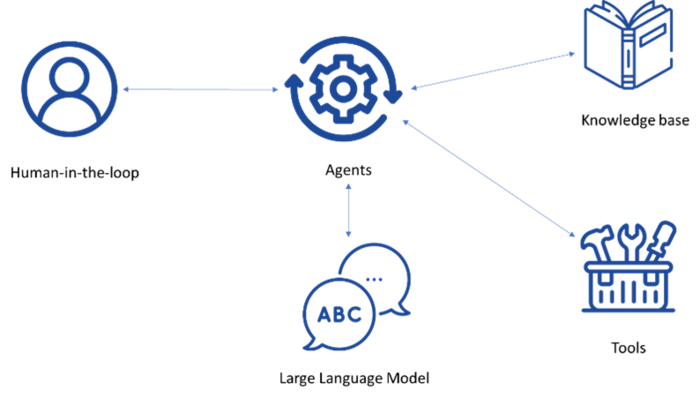New knowledge is created at a phenomenal pace given the advent of new technology. This knowledge has intrinsic value and can be leveraged to gain a competitive business advantage.
Some knowledge comes in the form of product documentation, user manuals, or standard operating procedures. Knowledge creators – in this case technical writers – usually liaise with business stakeholders to produce this type of information and keep it up to date. This involves multiple meetings, peer reviews, and content quality assurance processes.
The current landscape
Customers greatly benefit from technical communication as it helps them accomplish tasks. Tech doc teams are working alongside customer support teams to reduce the number of tickets, improve customer support agents, reduce resolution time, and redirect customer support tickets. But despite technical documentation being at the source of knowledge creation, documentation teams often struggle to quantify the value of their work.
Knowledge creation teams are often seen as cost centers rather than revenue enablers. Instead of hiring more technical writers, organizations invest in customer support teams. Although some frameworks and metrics are available to quantify the value of knowledge creation teams, it is harder to associate the direct evidence of activities accomplished through documentation with business outcome metrics. Business value metrics justify the investment into knowledge management practices, yet many organizations are not making the right move.
The knowledge creator value stream ends once a customer has found the relevant information. However, the customer value stream only begins here. The real outcomes that knowledge creation teams should strive for are:
- How does documentation help to accomplish a task?
- How does documentation help customers to self-serve?
Many activities that technical writers undertake, such as drafting content with information collected from stakeholders, reviewing and updating existing content, and creating media artifacts, can quite easily be automated. Yet, many technical writers are skeptical about using Generative Artificial Intelligence (GenAI). Hallucinations and GenAI’s inability to provide a reliable approach to curating information are the main factors hindering the technology’s adoption. More importantly, technical writers are reluctant to change, and product vendors are slow to introduce GenAI.
Drivers of change
Modern customers are tech-savvy, cloud-native, and mobile-friendly users who need to access information quickly and accomplish the task using the discovered knowledge instantly. Customers are starting to become familiar with ChatGPT-like interfaces, and many now prefer conversational user assistance.
Currently, there are three forces at play driving change in the knowledge base domain:
1. Technology: Automation and intelligence are increasing across industries, while the cost of intelligence is going down. The level of intelligence offered by technology is set to grow rapidly. With the rise of GenAI technology, new tools are becoming available to solve many business problems in new ways. We no longer need to perform mundane, low-value tasks. This technology force is disrupting knowledge management practices as old practices are either automated or made obsolete.
2. Customer behavior: A shift in customer behavior is disrupting the user experience (UX) of how knowledge is consumed and used. Customers are no longer interested in simply acquiring knowledge. Instead, they wish to accomplish complex tasks quickly. Also, they want to complete simple tasks more autonomously, utilizing a reliable knowledge base.
3. Knowledge creation patterns: The way new knowledge is created is also facing disruption as businesses are trying to reduce value-lead time. The quicker the value is realized, the quicker they can capture and monetize it. GenAI will continue to accelerate knowledge creation from multiple sources, and many practices in knowledge management will be taken over by GenAI.
Anyone who creates knowledge and uses knowledge will want to leverage these new opportunities.
The future is exciting
AI technology will become ubiquitous and communication between products/services will become seamless. The rate at which we create new knowledge will accelerate as knowledge creators will increasingly be aided by GenAI tools. Nevertheless, new knowledge is created in meetings and discussions, not in the tool that knowledge creators work in. Also, keeping a human in the loop is very important for producing trustworthy and accurate content.
An agentic framework that can make decisions and execute tasks based on defined processes will be prevalent across the knowledge management life cycle, as shown in Figure 1.
The role of documentation in achieving business outcomes such as customer satisfaction will be tied to corporate strategic initiatives. In the product industry, products and documentation (knowledge base) will converge and become a single entity. The services industry will enable customers to self-serve and provide a richer user experience. Insights curated from different business applications will create an avalanche of intelligence that drives better knowledge experiences.
Knowledge creation and mobilization
A Large Language Model (LLM) agent is an autonomous unit programmed to perform tasks, make decisions, and communicate with other agents. These agents can be considered as members of a knowledge creation team with specific skills and tasks. Agents can have different roles, such as “peer reviewer”, “writer”, or “customer support agent”, each contributing to an overall goal. Agents will be incorporated into many services and products and trained to take the right actions based on the scenario. They will deliver timely intelligence on what has happened and provide data on how strategic decisions will pan out. In the future, technical writers will be writing policies for provisioning and maintaining agents.
The agents will help customers mobilize the knowledge stored in the organization’s knowledge repository and perform tasks on the customer’s behalf or execute certain steps based on “how-to” manuals written in the software documentation.
Conclusion
As knowledge creators, we need to embrace this new wave of technology where it helps to create and enhance knowledge faster. This technology is already included in many team collaboration tools such as Teams, Slack, and others, and helps us to capture tacit knowledge. This knowledge keeps content mobile and supports LLM agents. The flow of intelligence across agents also helps knowledge creators to be more agile and achieve their full potential.


